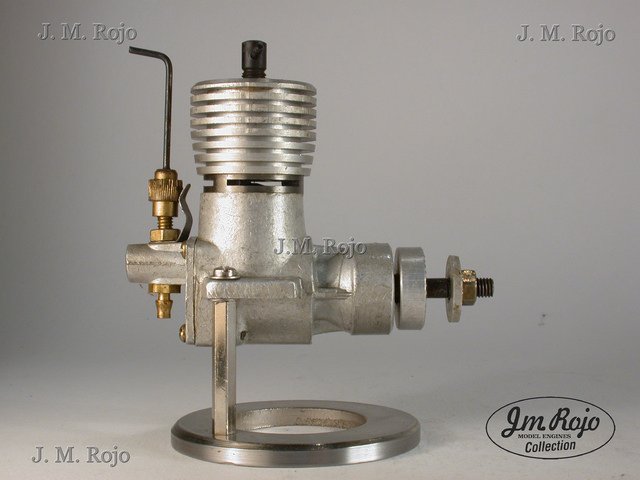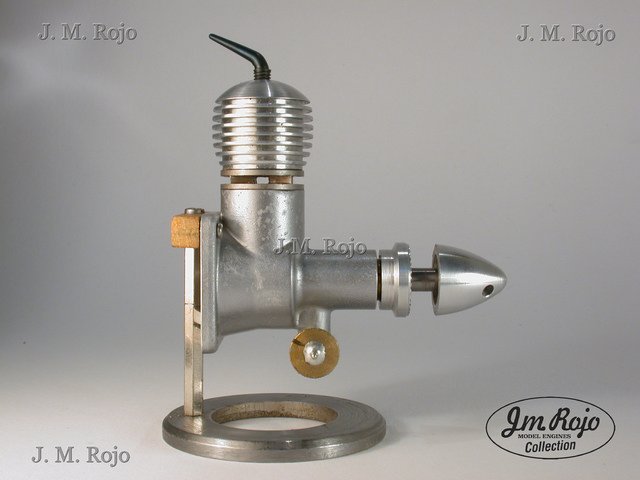MAKE YOUR OWN MODEL DIESEL FUEL- THIS BOOK SHOWS YOU HOW; GET IT AT THE ENGINE TRADING POST
Browse book at;
http://www.wix.com/crockerdh/my-store#!
Click the link Below to Browse the Diesel Book
RUSSIAN KMD 2.5 cc DIESEL ENGINE
Circa 1987
Circa 1987
Design history:-
Designed and manufactured in Moscow Russia in the mid 1980's.
Design Features:-
Rear induction; integral cylinder head; large advanced transport port design; die cast aluminum cylinder with a hardened steel liner, seating on its lower edge and prevented from vertical movement by a single grub-screw bearing down on a V-notch in the liner’s top edge; the cylinder assembly extends to below the exhaust port, where it is mounted to the crankcase with four M3 machine screws; and schnuerle cylinder scavenging technology
Specifications:-
Displacement 2.5 ccBore 15 mm;
Stroke 14.5 mm;
Weight 180 grams
Observations:-
Another style of packaging
Shown below mounted on test stand ready for a test run
Proof of the accuracy of my tachometer:
The standard engines should run from the factory about 13000-14000 rpm. with 0,34 hp.The first engine is tested with the 3,4 mm venture and the readings like suspected were right on as predicted, so we can conclude that the tachometer is recording accurately.A RACE TUNED KMD 2,5 cc CAN RUN + 26000 RPM!!!
Over the last 30 years, I tuned a lot of engines and read a lot books about the gas flow in a combustion engines..I my next clip I ran the engine at 26000 rpm.
The Russian engines are well known for dirt inside.You can find almost anything inside from metal chips to grinding paste. So a good cleaning is essential with these engines. The second thing I recommend is to change the ball bearings. The quality of Russian bearings were not to up to the same standard in the 1980's as here in the west today and secondly; the dirt from sitting in the box for 30 years can also be detrimental to performance.The Factory move to another location with new management. Unfortunately these changes also brought with it, far less quality control. Which is evident by lower quality of the new White Head engines, than existed, with the older Black Heads.
I have also a nice link on model engine news. Its more of a back ground story, but very interesting.The engines were made in a military plant near Moscow, the plant was established with the primary goal to exported to the west. That's why its a more of a quality product than the other engines, that came from the same factory; like the mk-17 and the Map3.
http://www.youtube.com/watch?v=g4yOkNSC_ZI
After Tuning
http://www.youtube.com/watch?v=f-K9i-5Atgg
http://www.youtube.com/watch?v=4gqw70icL6Q
This posting is prepared in collaboration with YouTube Channel valic000

.JPG)
.JPG)
.JPG)
.JPG)
































